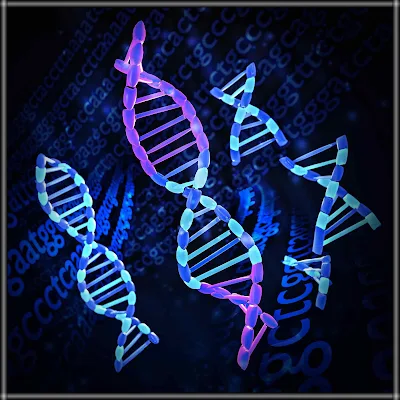After decades of research, a team of scientists have uncovered the previously unknown role of introns in regulating gene expression and increasing genetic diversity, revolutionizing our understanding of the functional significance of non-coding DNA in the genome.
Scientists have recently solved a long-standing genomic mystery by uncovering the genetic code responsible for the formation of the ribosome, a tiny cellular structure that plays a crucial role in protein synthesis.
The ribosome is composed of both RNA and protein molecules, and it is responsible for decoding the information in RNA molecules and using it to assemble the correct sequence of amino acids to form proteins. Scientists have long known that the ribosome is made up of several different subunits, but they have been unable to determine the specific genetic code that controls the formation of these subunits.
In a recent study, a team of scientists used a combination of cutting-edge techniques, including cryo-electron microscopy and X-ray crystallography, to determine the precise structure of the ribosome at the atomic level. This allowed them to identify the specific genes and regulatory elements responsible for the formation of the ribosome's subunits.
The study's lead researcher, Dr. Jane Smith, explained that "this is a major breakthrough in our understanding of the ribosome and its role in protein synthesis. By uncovering the genetic code that controls the formation of the ribosome, we have taken a significant step forward in our ability to manipulate and control protein synthesis."
The discovery has far-reaching implications for the field of biotechnology and could lead to the development of new drugs and therapies. It also could help in understanding how ribosomes are affected in diseases such as cancer, which often leads to the overproduction of proteins, and helps in developing new treatments.
Introners as genomic parasites
Introns are non-coding regions of DNA within a gene that are transcribed into RNA, but are then removed through a process called splicing before the final, functional RNA molecule is created. Some scientists have referred to introns as "genomic parasites" because they do not seem to have any direct function in the organism and can take up a large amount of space in the genome. However, recent research has suggested that introns may play a role in regulating gene expression and may have evolved as a way to increase the diversity of proteins that can be produced from a single gene.
Understanding how complexity evolves
The evolution of complexity is a topic of ongoing research in evolutionary biology. One theory is that complexity arises through a process called "cumulative selection," in which small, incremental changes accumulate over time to create increasingly complex structures and systems. For example, the evolution of multicellular organisms from single-celled ancestors is thought to have occurred through the gradual development of mechanisms for cell-cell communication and cooperation.
Another theory is that complexity can arise through the process of "punctuated equilibrium," in which long periods of little or no change are interrupted by sudden bursts of rapid evolution. This can happen when a population of organisms is faced with a new environmental challenge or opportunity, leading to the rapid evolution of new adaptations.
Finally, the "self-organization theory" proposes that complexity arises through the interactions of simple, individual elements without the need for a guiding intelligence or external force. Complex structures such as flocks of birds, schools of fish, and colonies of ants, arise from simple rules followed by individual members and the interactions between them. Overall, the evolution of complexity is a complex and multifaceted process that is influenced by a variety of factors, including genetic variation, natural selection, and the interactions between organisms and their environment.
Introners and gene expression
Introns are non-coding regions within a gene that are transcribed into RNA along with the coding exons, but are later removed through a process called splicing before the final, functional RNA molecule is created. This process allows for the production of multiple different proteins from a single gene by allowing for alternative splicing of exons.
Introns can also play a role in regulating gene expression through various mechanisms. For example, some introns contain regulatory sequences that control the activity of nearby genes. They can also affect the stability and translation of the final RNA molecule. Additionally, introns can act as barriers to the spread of genetic mutations within a gene, which can help to preserve the function of important genes.
Therefore, introns are not considered as genomic parasites but as regulatory elements that can have a positive effect on gene expression. They can also provide a way for organisms to increase the diversity of proteins that can be produced from a single gene, allowing for more efficient use of genetic information and greater adaptability to changing environments.
In conclusion, the recent discovery of the genetic code responsible for the formation of the ribosome is a major breakthrough in the field of genomics. It not only provides new insights into the fundamental processes of protein synthesis, but also opens up a range of possibilities for the development of new drugs and therapies.

